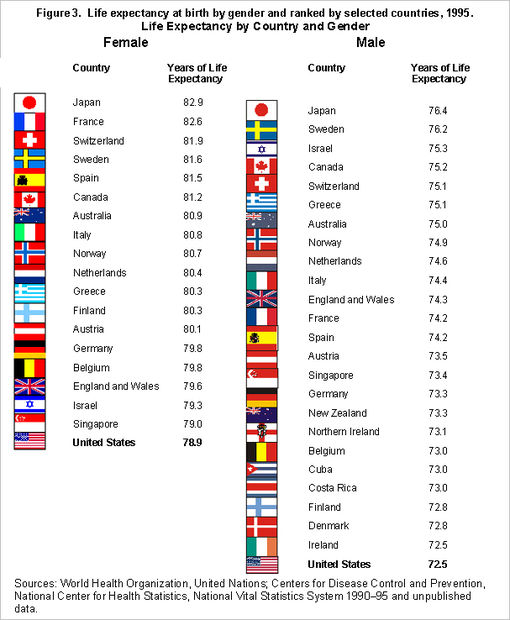
© tneel.uic.edu
Despite modest gains in lifespan over the past century, the United States still trails many of the world's countries when it comes to life expectancy, and its poorest citizens live approximately five years less than more affluent persons, according to a new study from Rice University and the University Colorado at Boulder.
The study, "Stagnating Life Expectancies and Future Prospects in an Age of Uncertainty," used time-series analysis to evaluate historical data on U.S. mortality from the Human Mortality Database. The study authors reviewed data from 1930 through 2000 to identify trends in mortality over time and forecast life expectancy to the year 2055. Their research will be published in an upcoming issue of
Social Science Quarterly.
Although the researchers found that the U.S. can expect very moderate gains in coming years (less than an additional three years through 2055), the U.S. still trails its developed counterparts in life expectancy. For example, the average life expectancy in the U.S. for a person born today is is 78.49, which is significantly lower than people born in Monaco, Macau and Japan, which have the three highest life expectancies (89.68, 84.43 and 83.91 years, respectively). In addition, the most deprived U.S. citizens tend to live five years less than their more affluent countrymen, according to Justin Denney, Rice assistant professor of sociology, who was principal author for the study.
Denney said that in 1930, average life expectancy in the United States was 59.85. By 2000, it rose to 77.1 years. "But when broken down, these numbers show that those gains were mostly experienced between 1930 the 1950s and 1960s," he said. "Since that time, gains in life expectancy have flattened out.
"During periods of expansion in length of life, a similar expansion has occurred between more and less advantaged groups -- the rich get richer, the poor get poorer, inequality grows and life expectancy is dramatically impacted," Denney said.
"And despite disproportionate spending on health care, life expectancy in the U.S. continues to fall down the ladder of international rankings of length of life. It goes to show that prosperity doesn't necessarily equal long-term health."
Denney said
many of the chronic conditions that have led to smaller gains in life expectancy are more easily treated when people are more financially stable. He said the study shows "the ugly side of inequality," and he hopes it will draw attention to the fact that more needs to be done to address stagnating life expectancies in the U.S. and eliminate inequalities in the U.S.
"Even in uncertain times, it is important to look forward in preparing for the needs of future populations," Denney said. "The results presented here underscore the relevance of policy and health initiatives aimed at improving the nation's health and reveal important insight into possible limits to mortality improvement over the next five decades."
The paper was co-authored by Robert McNown, Richard Rogers and Steven Doubilet at the University of Colorado-Boulder.Rice University and the University of Colorado-Boulder funded this study.

Reader Comments
to our Newsletter